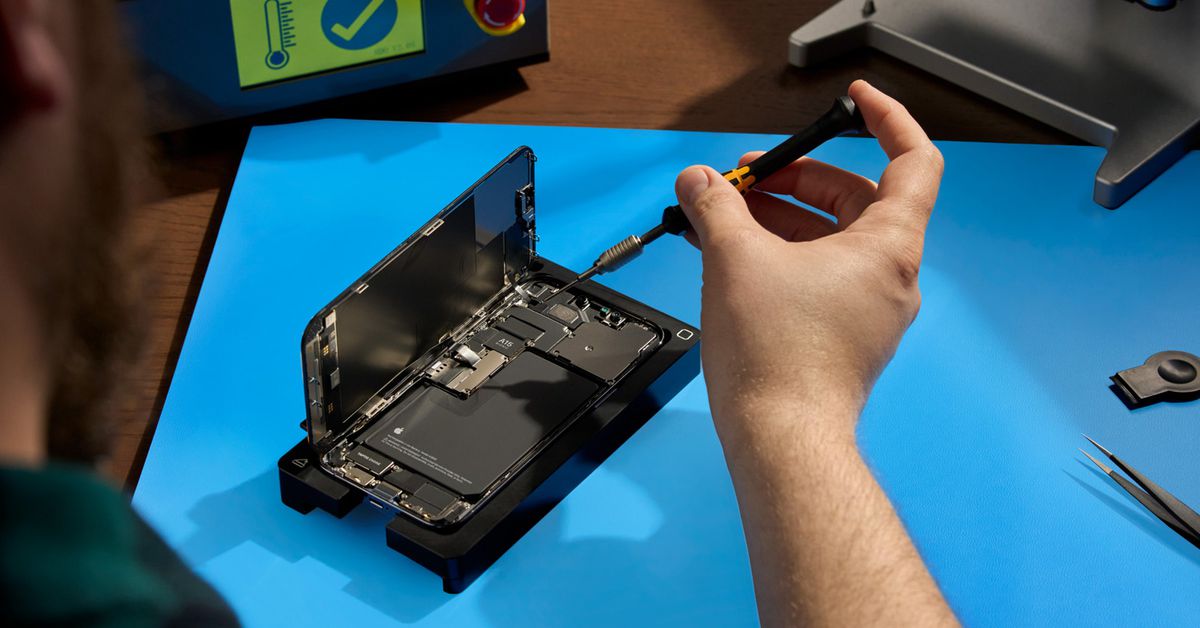Watches have been 50m/100m water proof for years with replaceable off the shelf button batteries. You just unscrew the back, replace the battery, make sure the seal isn’t damaged and in it’s little track and screw it back on.
This is seriously not rocket science.
Those screw in backs add a few millimetres of thickness to the watch. They also need to be made from thick heavy materials like stainless steel. When you make them out of lighter materials, like plastic, they are far thicker.
It’s not rocket science, but it is a challenging problem and one that can only be solved with compromises. Personally I’m fine with those compromises, but you’re kidding yourself if you think anyone is going to buy a smartphone with a 4mm thick steel battery cover.
What’s probably going to happen is phones will have a screw on cover with a weak adheisve that will be destroyed when you replace the battery. You’ll need to remove the adhesive and apply new adhesive if you want to maintain water resistance.
Also - watches aren’t compliant are they? You can’t take the back off a watch with a screwdriver. Dive watches would fall under the “designed to be submerged” exemption, but regular watches willl probably ahve to switch to being held in with screws instead of a screw in back - and a lot of currently waterproof watches will become water resistant.
Does this really need an explanation?
-
Non-replaceable batteries provide zero benefits.
-
Swappable batteries allow you to just carry extras instead of being tethered to a charger. I used to literally never plug my phone in. Just swap batteries one or twice a day.
-
It’s the first component to die in most phones, and people can’t be bothered or don’t realize you can have them replaced, so they just throw them in the garbage. That’s why they started doing it in the first place.
That’s fair, but some don’t want to be able to swap out the batteries on demand, we just want to be able to replace a worn one every few years for less than $100. USB power is so ubiquitous these days that having access to quick charging isn’t an issue for most people, and Qi is pretty convenient.
Again, there is no trade-off. If you want to just plug your phone in and be tethered to a wall, you can still do that.
-
It feels like this fight is 5-7 years late. I am glad the EU actually tries to regulate on behalf of the consumer vs what the US has been doing lately(almost nothing), but the EU does it in a ham-handed way half the time.
I don’t necessarily want a user replaceable battery on my phone. I prefer it not be chonky and I prefer it to be water and dust proof. All of those features impact me sooo much more than being able to change the battery.
Also batteries have come so far this past decade it almost seems like a non issue.
and I prefer it to be water and dust proof.
Adding replaceable batteries does nothing to affect this. An o-ring with a clamping mechanism will make it just as water and dust resistant as before. Your phone’s charging port is more susceptible to water and dust than a replaceable battery will ever be
Also batteries have come so far this past decade it almost seems like a non issue.
I’ve actually have the opposite experience. I didn’t mind integrated batteries a decade ago, because the hardware improved at such a fast pace that it became obsolete before the battery gave up.
But now the hardware improvements are not so fast and a decent phone will be usable for many years, at which point the battery (at least for me) is the first point of failure.
I would much rather take battery replacement over some water and dust protection as ip54 should be enough for daily use (fairphone 4 for instance does have ip54). The only time I’ve needed more protection is when I needed to take family photos in a pool



